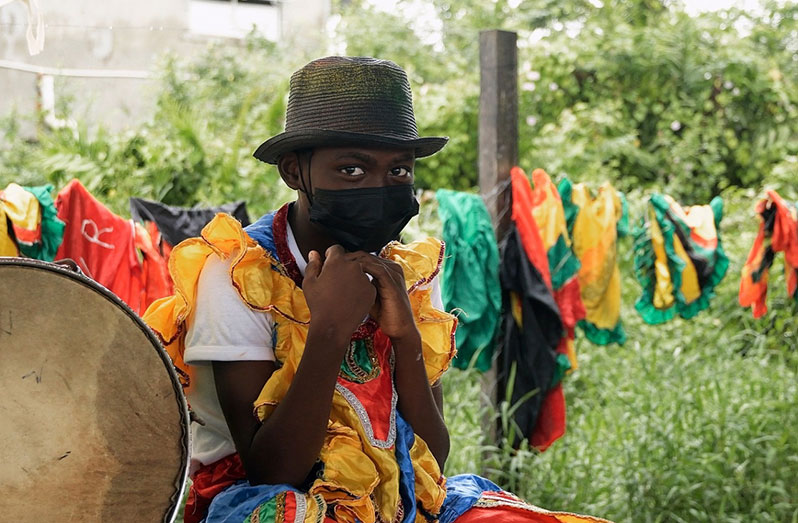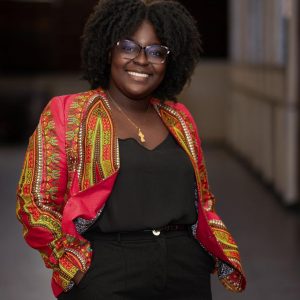INDICATING that the Christmas season is near, one can hear the sounds of drums and flutes permeating from a band of flouncers. Dressed in colourful flamboyant apparel and performing multiple dances and tricks, these revealers are called masqueraders. They often surface during the festive celebrations of Mashramani and Christmas in Guyana.
In the blazing hot sun or even on cloudy days, Guyanese masqueraders work the streets keeping the centuries-old tradition going.
In the spirit of the Christmas season and curiosity of this tradition, the Guyana Chronicle journeyed to the East Coast Village of Belfield, a former plantation and spoke with one, Kwami Winth, who is the leader of a band called the Victoria Renegades.
Dancing since a lad, Winth over the years has played almost every character there is in a masquerade band.
Though not as popular as it is used to be, the masquerade band was once a staple during the major celebrations. Winth noted that the tradition, over the years, has lost its ‘spunk’ and has become a dying art.
In the future, Winth is hoping to recruit more young men and women from across the country. He noted if support is given by the relevant authorities, he is open to hosting a workshop to teach the art form to anyone who is interested.

Over the years, the revelers are becoming fewer and fewer; however, there are a few who are fighting to preserve the masquerade’s rich history in Guyana, one of these few persons is Micheal Glasgow.
Glasgow, who performs alongside Winth during brief ‘gaff’ with this newspaper, related that he too has been dancing for many years and has been unable to keep count.
A very passionate Glasgow recalled his younger days and related that he would often get away with his friends unknowing to his mother to learn the many dances of masquerade.
This, he said on many occasion has caused him to get a spankings whenever he returned home.
Meanwhile, a shy Lennox Josiah, 14, who is the youngest member of the band, shared that he has been dancing for the past two years and always looks forward for the festive seasons to perform.
Josiah, a flouncer, while small in stature, manages to stand out among the older men, women and boys in the band.
HISTORY OF MASQURADE
The energetic gyrations of masquerade can be traced back to West Africa. This tradition travelled across the seas and spread across the Caribbean.
The masquerade band is said to have its roots in slavery. The dancers and revelers are said to be features of religious societies in many areas. Four main types of masqueraders are identified by the roles they play: those who embody deities or nature spirits and to whom sacrifice is made to assure the fertility of land and people, those who embody the ancestral spirits, those who placate the spirits through their dance, and those who perform principally as entertainers.
GUYANAESE MASQURADE CHARCTERS
The band comprises of many traditional figures such as Mother Sally or Bam Bam Sally which is a female character who flounces around with an unusually funny and large behind; the mad Bull, a menacing figure with large horns; the man on stilts and revelers.
Traditionally, the band would parade through busy streets performing several articulate steps namely: The Flounce, expertly delivered by kids as young as five and seven years old. Other steps include: Bam-Bam Sally; Lady going to Market; Mad Cow; Side to Side; Breast Plate; Shovel; Chucku-Chucku, Circle; Elleo Toto; Long Lady; Stilt; the Drummers; and Style off – the art form which demonstrates how the money collector (dancing all the while) picks up tips or donations of cash which would have fallen onto the ground.




.jpg)










